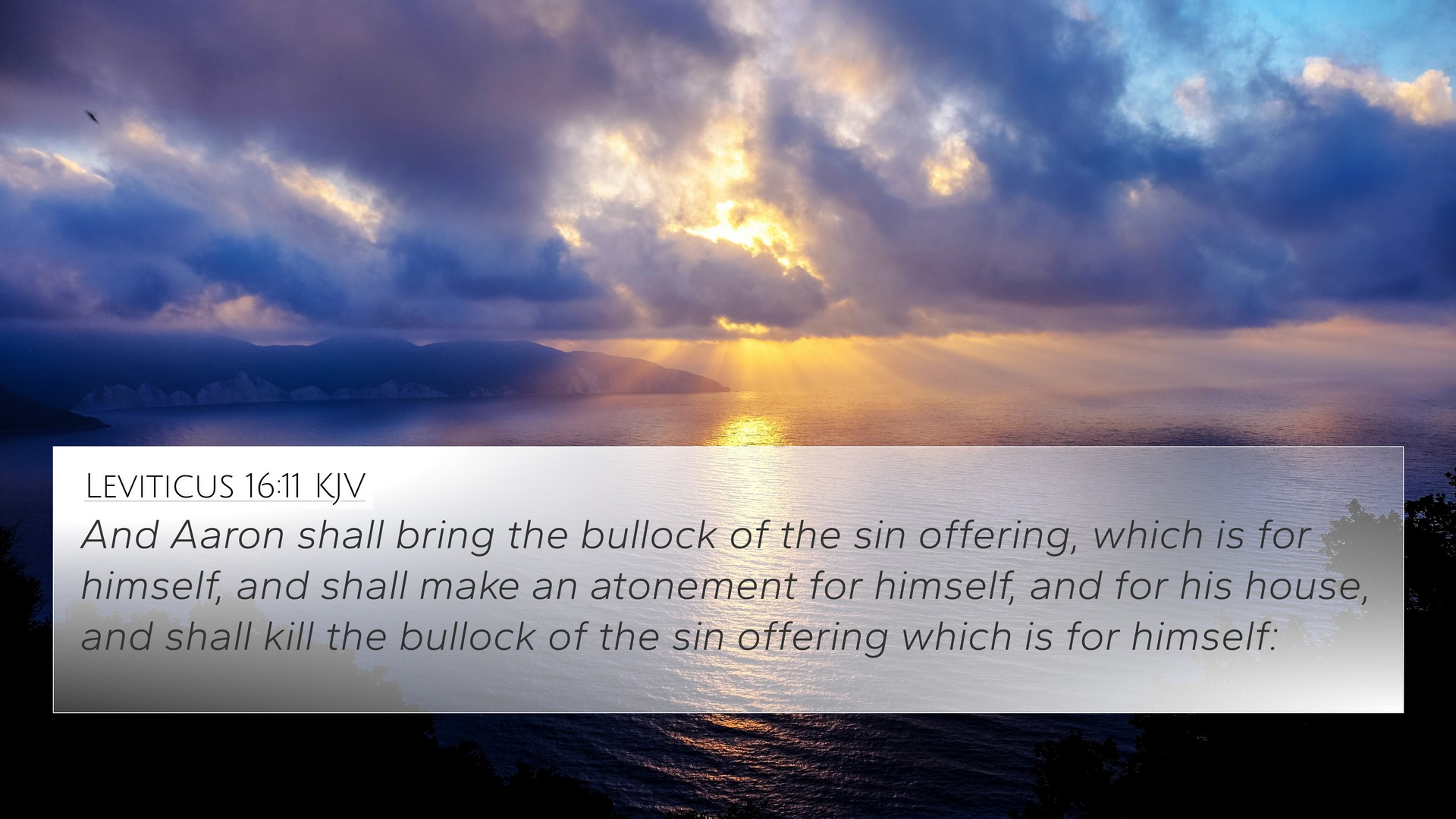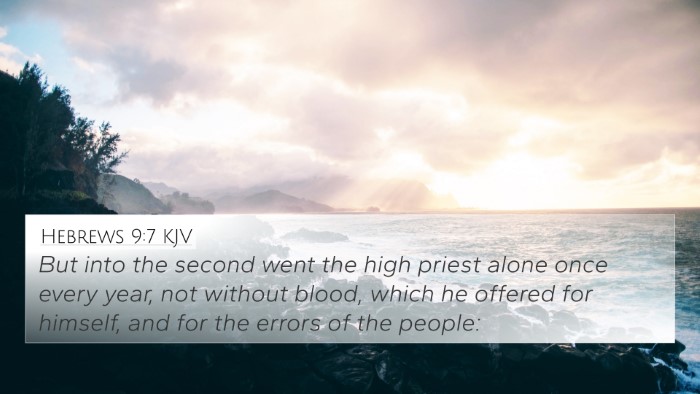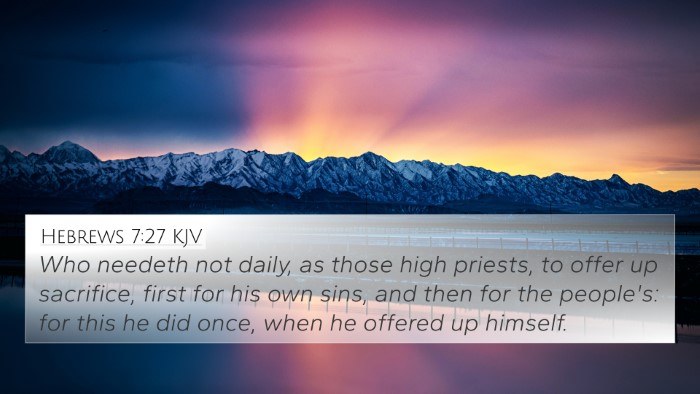Understanding Leviticus 16:11
Leviticus 16:11 states: "And Aaron shall bring the goat upon which the Lord's lot fell, and offer him for a sin offering." This verse marks a significant moment in the ceremonial procedures of the Day of Atonement, emphasizing the themes of sacrifice, atonement, and divine selection.
Summary of Leviticus 16:11
In this verse, Aaron, the high priest, is instructed to take a specific goat that has been marked by God's lot as a sin offering. This act symbolizes the importance of confession and atonement in the Jewish faith, revealing the broader themes of repentance and divine mercy. In the ancient Jewish religious context, the high priest acts as a mediator between God and the people, hence this act is crucial in maintaining their covenant relationship with God.
Commentary Insights
Matthew Henry's Commentary
According to Matthew Henry, this sin offering is important as it acknowledges human sinfulness and the necessity of sacrifice to restore fellowship with God. Henry notes that the offering signifies that atonement is made for the sins of the people, highlighting a theme prevalent throughout Scripture where God desires reconciliation with His creation.
Albert Barnes' Notes
Albert Barnes emphasizes the symbolic nature of this ritual. He points out that the goat acts as a substitute for the people's sins and reflects a greater sacrifice to come. The act of offering illustrates the seriousness of sin and the need for penitence, which links this Old Testament practice with New Testament teachings of salvation through Christ.
Adam Clarke's Commentary
Adam Clarke discusses the significance of the "lot" falling upon the specific goat, indicating divine choice. He remarks that this method underscores the point that atonement is not merely a human endeavor but is divinely ordained. Clarke further connects this passage to the larger narrative of redemption, demonstrating how sacrificial offerings point to the sacrificial work of Christ.
Key Themes in Leviticus 16:11
- Atonement: The necessity of atonement through sacrifice for sin.
- Divine Selection: God’s sovereign choice in the process of atonement.
- Symbolism: The goat represents the burden of sin being taken away.
- Intermediary Role: Aaron's role as a mediator between God and the people.
Bible Cross References
Leviticus 16:11 connects with several other scripture passages, emphasizing the thematic connections present throughout the Bible:
- Hebrews 9:7: Discusses the high priest entering the Most Holy Place with blood, reflecting the sacrificial system's intent.
- Exodus 30:10: Details the role of Aaron in the sin offering process.
- Isaiah 53:6: Prophesizes the suffering servant who bears the iniquities of us all.
- Romans 3:25: Connects God’s mercy through faith in Christ, aligning with the themes of atonement.
- 1 Peter 2:24: Highlights Christ bearing our sins, echoing the transfer of sin onto the sacrificial goat.
- John 1:29: Refers to Jesus as the "Lamb of God" who takes away the sin of the world.
- Colossians 1:14: Speaks of redemption through His blood, which mirrors the themes of sacrifice found in Leviticus.
Thematic Connections in Scripture
The connection between Leviticus 16:11 and these referenced verses illustrates a robust framework of sacrificial practice that permeates both Old and New Testaments. Understanding these links enriches the reader's comprehension of atonement and redemption across scripture.
Tools for Bible Cross-Referencing
To explore the intricate web of relationships between scriptures, various tools can assist. Utilizing resources such as a Bible concordance, a cross-reference Bible study guide, or engaging in comparative Bible verse analysis can enhance studies. These tools help identify thematic Bible verse connections and can facilitate deeper insights into how verses interact with one another.
Conclusion
In conclusion, Leviticus 16:11 serves not only as a vital component of the Day of Atonement but also as a profound reminder of the themes of sacrifice, sin, and divine mercy threaded throughout the fabric of Scripture. By cross-referencing this verse with others, we can uncover the depth of these themes and their ultimate fulfillment in Jesus Christ, thereby enriching our understanding of the entire biblical narrative.






